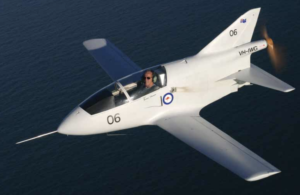 “I’m sorry, Bob. You’re going to be disappointed,” Gordon Johanson said, towering beside me. Snugly reclined in his BD-5’s form-fitting cockpit, the airplane supported in a purpose-built cradle, I was practicing landing gear retraction and extension, alternately yanking and heaving on the stiff T-handle with my left hand while trying hard not to move the side stick’s hair-trigger pistol grip loosely grasped in my right. “Disappointed?” I asked. “You’re just going to find it’s so easy to fly, that’s all. Nothing nasty. No drama at all,” he explained.
“I’m sorry, Bob. You’re going to be disappointed,” Gordon Johanson said, towering beside me. Snugly reclined in his BD-5’s form-fitting cockpit, the airplane supported in a purpose-built cradle, I was practicing landing gear retraction and extension, alternately yanking and heaving on the stiff T-handle with my left hand while trying hard not to move the side stick’s hair-trigger pistol grip loosely grasped in my right. “Disappointed?” I asked. “You’re just going to find it’s so easy to fly, that’s all. Nothing nasty. No drama at all,” he explained.
This notion took some absorbing. Quite simply, the BD-5 has a reputation. It took forever to develop, the company went broke, thousands of aspiring builders lost their deposits, and there were several early accidents—the makings of a real horror show.
And just look at it. The thing’s tiny, all cockpit, with no wing to speak of, minuscule control surfaces and a highly tuned, turbocharged automotive engine buried in its rear fuselage. A real hot-ship. It would have to be challenging to fly… Wouldn’t it?
Now, let’s ponder a minute. Yes, it’s small, but it’s also light, weighing little more than a Cassutt. Its engine also provides 100 horsepower. The wings are similarly Cassutt size—as are the control surfaces, and its speed range is comparable. But the Bede has tricycle gear, so you can see where you’re going. Why shouldn’t it be at least as straightforward to fly?
The 3+30 Year Plan
Johanson started his Bede 30 years ago, finishing three years later. He couldn’t sort its Evinrude outboard motor, so he mothballed it until a better engine became available. Since its “final” completion last year, he has flown more than 100 hours in it.
Apart from its tubular spars and bonded ribs, the BD-5’s construction is conventional all-aluminum stressed-skin semi-monocoque, fastened with aviation-quality Avex pulled rivets—mostly countersunk—making the exterior very clean. The swept, all-flying horizontal stabilizer and its anti-servo tab are operated by cables, as is the tiny, highly swept rudder with its relatively big aerodynamic/mass balance horn. The ailerons are torque-tube operated to facilitate wing removal (a half-hour job). All control circuits are commendably friction-free, the small ailerons have neat balance horns, and the control surface gaps are tight.
Less conventional components include the manually retractable landing gear, operated by that T-handle between your knees. This pops up or down in less than half a second, automatically locking with its over-center geometry. Nowadays side sticks are common, but they were cutting edge in the 1970s. The pantograph canopy mechanism is light and neat. The fuel gauges are simple, foolproof and still unique: a cluster of six Plexiglas rods of differing lengths protrude diagonally from the wing’s upper surface down into each tank. When the lower ends are wetted by fuel, they appear dark; when uncovered, light.
The BD-5’s most revolutionary components are its pusher propeller and associated drive system. These enable the engine to be mid-mounted for low drag and optimum mass distribution, while the chisel-tailed fuselage gives the sexily curved, multi-laminated wood prop a comparatively smooth airstream. The drive system incorporates toothed drums turning a rubber belt to minimize harmonics, a long shaft, lots of bearings and a freewheel clutch—it is slightly odd to be able to spin the propeller freely in one direction but with resistance the other way.
All By Yourself
The cockpit has a sailplane’s snugness. You enter by stepping over the low sill, placing one foot on the seat pan, bringing in the other and then, supporting your weight on the cockpit sides or center-section leading edges, shooting your feet forward into their individual wells and relaxing in the fully reclined seat. There is no wasted space; it is comfortable, but not cramped.
The three-position manual flaps are extended with a lever beside that gear handle between your knees. One accident occurred when the flaps popped up on final, so Johanson’s has improved detents. His other modifications include a firewall protruding slightly into the cockpit and doubling as a headrest, substituting cold-bent aluminum maingear legs for the original frangible fiberglass ones, Matco brakes instead of the ineffective standard puck units, a raised instrument panel for increased legroom, improved shoulder harness attachment, a special “almost constant-speed” propeller, 11 inches clipped off each wing for a higher top speed and roll rate, a fiberglass tail bumper and lots of engine mods, including to the fuel system, ignition, electrics, coolant system, ducting and a ground cooling fan. Like most flying BD-5s, this one has over 20 pounds of lead shot in its nose cone, plus as much more as would fit into the long, removable pitot probe, to get the center of gravity into its proper (very narrow) range.
Gordon’s fuel system is unusual. With no on/off valve, you merely switch on one of the electronic ignition systems and the left or right fuel pump, and immediately hit the starter (otherwise fuel dribbles from the Posa slide carburetor). His Nissan motor instantly barked into life to run at a gentle 1000-rpm idle.
Releasing the toe brakes and increasing power to 1500 rpm soon had us rolling. The gear is firm, the nosewheel merely casters, and the wheelbase is a scant 66 inches, with a tiny 44-inch track, so you need to either keep up the speed or use a burst of power while braking for tighter turns. I didn’t experience the problem of weathercocking other pilots have mentioned. Pre-takeoff checks are as simple as everything else.
Just Trying Out
First, I followed the owner manual’s advice and conducted a high-speed run. Lining up meticulously, and ensuring the nosewheel was straight, I carefully opened the throttle, increasing rpm to 6400 with a turbocharger boost of 8 pounds. The rumble behind me quickly grew to a roar, and I was propelled forward like a human cannonball. Quick dabs of brake kept us straight to 30 knots, when the rudder became effective. With your eyes a mere 33 inches above the runway, your rear almost scraping it and those tiny wheel bearings whining, the world goes past awful quickly.
At 50 knots I throttled back, and two things happened. I was thrown forward in my straps, and the nosewheel lifted. Intending to raise the nose myself, I covered the next 100 yards, bouncing the oleo up and down as I tried to find the stabilator’s null point and attune my wrist to its sensitivity and effectiveness. Within seconds the far threshold was roaring toward me, so I carefully braked to a halt.
Taxiing back, I had a little ponder. The noise, acceleration, control and overall awesomeness of the experience were pretty much as I had expected, so I determined not to hang around any longer, but to go for it this time. Once more, I lined up scrupulously, had a final scan around the cockpit, carefully double-checked the temperatures, flaps and canopy latches, took a deep breath and then pushed forward that slim throttle with much the same result—but this time I was prepared. By the book, at 60 knots I raised the nose so that the glareshield covered the far threshold. This took a surprisingly strong, steady pull, but little stick movement. A second later we popped into the air after a ground roll of perhaps 500 yards.
I dabbed the brakes, carefully relaxed my grip on the side stick, leaned forward and heaved on the gear handle with my left hand. “Thump,” the wheels were up. A glance at the airspeed indicator showed it accelerating through the recommended 90, so I shifted my grip to the flap lever and raised them. Both caused little apparent trim change but, relieved of their drag, the little aircraft surged forward, so I eased back on the stick.
Reality, Meet Legend
What a rucking pocket-focket! Believe me, without having immense self-control, it is impossible to climb a Bede straight ahead to 500 feet before turning. Lean left, and you’re instantly making a screaming climbing turn. The handbook specifically warns against the temptation to make a low-level, high-speed pass on your first flight, but believe me, the urge is overwhelming.
I climbed to 6000 feet for some stalls and the standard control, stability and performance assessments. That took half an hour, by which time my rolling wrist was becoming itchy, and some cautious aerobatics seemed in order.
Then Johanson called up to say he was taking off in his buddy Peter’s Bede, and my resolve was shattered. As he orbited, climbing, I swooped in the same tight radius, watching his tiny gray planform growing rapidly in my sights. We executed a classic scissors and yo-yo, and then circled once before I latched on to his right wingtip.
There was a momentary bob in pitch as I got used to that Spitfire-light stabilator, and then we were howling into a full-throttle, close-formation, curved approach to final. I have no idea of our speed, but it can’t have been far short of 200 knots. Pulling up and rolling gently away, what could I possibly say but “Yeehaaaa!” So I did. Then I climbed a little more, raised the nose, popped my wrist an inch to the left, watched the world revolve in 2 seconds, and said it again.
Visibility is superb, only equaled in my experience in some gliders and helicopters. The ailerons are wonderfully light, and the rudder is even lighter, though with very little feel—just a squeeze with one toe is needed to coordinate even the quickest of banks. The elevator is heavier, and as one’s wrist is not so strong, significant effort is needed to pull 3 G, which is precisely as things should be.
Control harmony is pretty good, and the airplane is nimble, but not at all skittish. We’re talking drug-scales fingertip pressures here (actually about 2 pounds per G). Breathe on the stick, and it’ll respond. Hit it, and you’ll snap your neck! The roll rate is around 180° per second with dead-beat roll damping. That tiny rudder prevents full-blooded slips, but you can still nearly double the glide angle. Clean, straight and throttled back, it glides at precisely 600 fpm at 95 knots.
Pitch stability is remarkably strong for such a short airplane, and its positive yaw stability is clearly helped by both the stabilizing effect of the lower rear fuselage and that pusher propeller. Roll stability is a little positive of neutral, so when established and trimmed in a steady turn, the aircraft gradually returns to wings level—unusual for a low-wing airplane. Indeed, I could let go of the controls for long periods while writing notes.
Quite the Couple
The one potentially hazardous characteristic is that strong nose-down pitching moment when you open the throttle and vice versa. Understandable due to the high thrust-line, this is nevertheless unusual. For instance if, when nicely configured and trimmed on final at 90 knots, you open the throttle wide on most airplanes, the nose will pitch up positively, so you need to do little more for a successful go-around. Try that on a Bede, and you’ll tent-peg into the ground among the approach lights. Alternatively, close the throttle (or suffer engine failure) while you’re trimmed for the climb, and if you don’t push forward very positively, you’ll quickly stall thanks to the power-off pitch-up and this light airframe’s low inertia.
The clean full-throttle climb from 500 to 1500 feet at 90 knots took just 37 seconds, giving a rate in excess of 1620 fpm—this on an 80° F day. Leaving the throttle wide at 3000 feet, trimming carefully, and allowing time for the speed to stabilize, pushed the ASI needle around to nearly 190 knots. (That’s a whopping 202 knots TAS on just 100 horsepower!) A high cruise power of 5200 rpm gave 153 knots IAS (163 TAS). Normal cruise of 5000 rpm showed 145 knots, and economy power of 4800 rpm returned 134 knots (142 TAS). Later, at 6000 feet, I sucked the rpm back to just 4000, and still got 100 knots (114 TAS). Johanson says his normal fuel consumption varies between a miserly 2.5 and 3 gallons per hour.
Things weren’t quite so good at the low end of the speed range. Clean and power-off, I felt clear buffet through the side stick as the speed fell through 70 knots, and little more back pressure was needed for the stall at 68. The stick was still a long way from the rear stop, and the wing dropped abruptly through 45°, though full opposite rudder caught it. Better prepared, I stopped the second wing-drop at 30°, with a loss of around 100 feet; you have to be gentle on the stick not to induce a secondary stall. With gear and full flaps, the buffet speed was depressed to 60 knots, and the break came at 57. Holding the stick hard against the backstop rather than easing the pressure, and carefully treadling the rudder to keep the ball centered, resulted in a nodding descent at an increasing rate.
The Bede Micro is an anti-complacency airplane, and while not at all hard to fly, it is not for novices or the inattentive. Like the stereotype Latin Senorita, pay her lots of attention and she’ll love you forever. Disrespect her, and she’ll slap your face—hard! If you’re lucky you might just get a warning flash of the eyes, or a nibble of buffet, as I did when throttling back into a steep descending turn to wash off some energy before joining the pattern. But I forgot that pitch-up with power reduction. The speed bled back further than intended, and as I increased the bank though 50°, I felt a tremor in the stick.
Wow, the airspeed was below 90 knots and dropping. How did that happen? The unusual pitch/power couple, that’s how! Immediate relaxation of the back pressure saved the day. The lesson: Any time you change the throttle setting, re-trim, and watch your airspeed like an eagle!
Buck Up for the Landing
Johanson had said, “Enter the pattern at 110 and lower the wheels and first stage flaps to stabilize things. Fly the approach at 90 knots, bleeding off to 85 on short final and 80 at the threshold. I take landing flap on short final, because the air loads are high above 85. Flaring halves the apparent runway length. Don’t keep raising the nose; just fly her on in that attitude.” Clearly, the landing would involve three particular issues: hold-off height, attitude and speed—summarized as low, feet-up and apparently fast. Fellow glider pilots should have little trouble with the first two, but the third would have to look after itself.
In any event, none of these aspects was a particular problem. At 90 with approach flap and a trickle of power the speed is stable, and you have a good view of the threshold, improved by flying a curving base leg. All of my approaches were virtually glides—no bad habit in an aircraft with an automotive powerplant. Pulling full flap at around 200 feet dropped the nose a little and helped with that speed reduction.
As the threshold flashed past, I concentrated on getting my bum right down to 8 inches above the runway, while trying hard not to over control. Willing myself to get down low, pitch up a little and then hold the attitude, I failed on my first attempt, continuing to raise the nose as in a taildragger; finally dropping us in from 2 feet. My second effort was much better, so I set off back for Serpentine’s narrow, 2400-foot runway. My arrival there turned out to be a non-event. Curving around base leg and nicely in the slot, I pulled full flap, put the trim wheel to Johanson’s recommended position, and concentrated on the picture. Sure enough, and once I got low enough, raising the nose to the correct attitude halved the apparent runway ahead, and the little airplane settled on to the ground, straddling the centerline just 100 yards past the threshold. The gentlest of braking got us stopped well within the short runway’s confines, and I didn’t have any difficulty with keeping straight. Johanson has landed in significant crosswinds, and he assured me it’s not a problem. I can only say that, despite initial misgivings, I was mightily impressed with this little airplane.
For more information, visit www.sabc.org.au.
Photos: Karen Grimstead, Allan & Siobhan Usherwood, Peter Gilbertson.


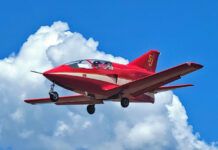
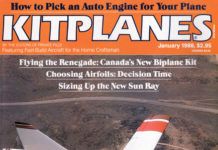
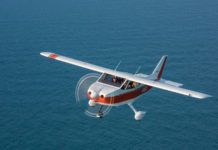
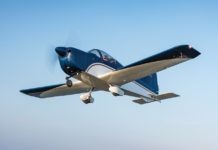
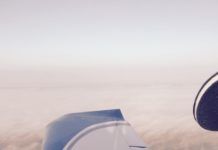
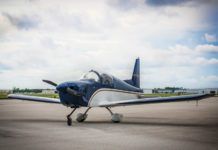

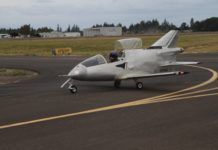
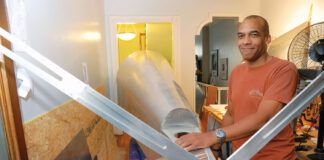
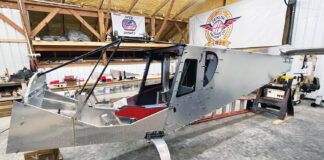


Hi is this BD STILL AVAILABLE
THANKS FOR AN ANSWER
CORDIALEMENT
EDEMEEUS